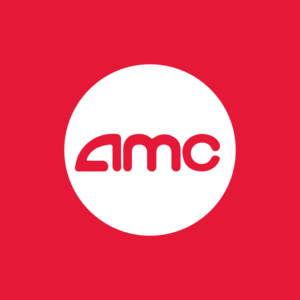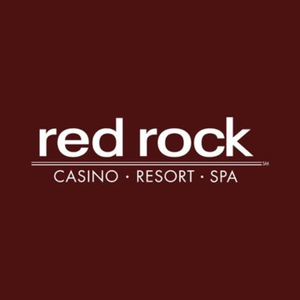
Monarch (MCRI)
Monarch keeps us up at night. Its sales have underperformed and its low returns on capital show it has few growth opportunities.― StockStory Analyst Team
1. News
2. Summary
Why We Think Monarch Will Underperform
Established in 1993, Monarch (NASDAQ:MCRI) operates luxury casinos and resorts, offering high-end gaming, dining, and hospitality experiences.
- 4.5% annual revenue growth over the last two years was slower than its consumer discretionary peers
- Underwhelming 16.8% return on capital reflects management’s difficulties in finding profitable growth opportunities
- Poor expense management has led to an operating margin that is below the industry average


Monarch doesn’t fulfill our quality requirements. We see more lucrative opportunities elsewhere.
Why There Are Better Opportunities Than Monarch
High Quality
Investable
Underperform
Why There Are Better Opportunities Than Monarch
Monarch is trading at $96.32 per share, or 16.8x forward P/E. This multiple is cheaper than most consumer discretionary peers, but we think this is justified.
Cheap stocks can look like great bargains at first glance, but you often get what you pay for. These mediocre businesses often have less earnings power, meaning there is more reliance on a re-rating to generate good returns - an unlikely scenario for low-quality companies.
3. Monarch (MCRI) Research Report: Q3 CY2025 Update
Luxury casino and resort operator Monarch (NASDAQ:MCRI) fell short of the market’s revenue expectations in Q3 CY2025 as sales rose 3.6% year on year to $142.8 million. Its GAAP profit of $1.69 per share was 7.4% above analysts’ consensus estimates.
Monarch (MCRI) Q3 CY2025 Highlights:
- Revenue: $142.8 million vs analyst estimates of $145.5 million (3.6% year-on-year growth, 1.8% miss)
- EPS (GAAP): $1.69 vs analyst estimates of $1.57 (7.4% beat)
- Adjusted EBITDA: $54.85 million vs analyst estimates of $53.87 million (38.4% margin, 1.8% beat)
- Operating Margin: 26.7%, up from 25.6% in the same quarter last year
- Market Capitalization: $1.76 billion
Company Overview
Established in 1993, Monarch (NASDAQ:MCRI) operates luxury casinos and resorts, offering high-end gaming, dining, and hospitality experiences.
Monarch began its journey with the Atlantis Casino Resort Spa in Reno, Nevada. It aimed to deliver a high-quality gaming and hospitality experience, focusing on the luxury resort market. The company's destinations provide an extensive range of amenities and services beyond traditional gaming.
Monarch's properties feature modern casino gaming facilities, deluxe hotel accommodations, fine dining, spa services, and entertainment. Its resorts target both gaming enthusiasts and guests seeking a premium leisure experience.
Revenue for Monarch is primarily derived from its diverse offerings, including casino operations, hotel services, and dining and entertainment amenities. The company prioritizes luxury, quality, and complete service, appealing to customers seeking an encompassing resort experience.
4. Casino Operator
Casino operators enjoy limited competition because gambling is a highly regulated industry. These companies can also enjoy healthy margins and profits. Have you ever heard the phrase ‘the house always wins’? Regulation cuts both ways, however, and casinos may face stroke-of-the-pen risk that suddenly limits what they can or can't do and where they can do it. Furthermore, digitization is changing the game, pun intended. Whether it’s online poker or sports betting on your smartphone, innovation is forcing these players to adapt to changing consumer preferences, such as being able to wager anywhere on demand.
Competitors in the casino and resort industry include Boyd Gaming (NYSE:BYD), Red Rock Resorts (NASDAQ:RRR), and Golden Entertainment (NASDAQ:GDEN).
5. Revenue Growth
A company’s long-term sales performance is one signal of its overall quality. Any business can put up a good quarter or two, but the best consistently grow over the long haul. Luckily, Monarch’s sales grew at an impressive 23.5% compounded annual growth rate over the last five years. Its growth beat the average consumer discretionary company and shows its offerings resonate with customers, a helpful starting point for our analysis.
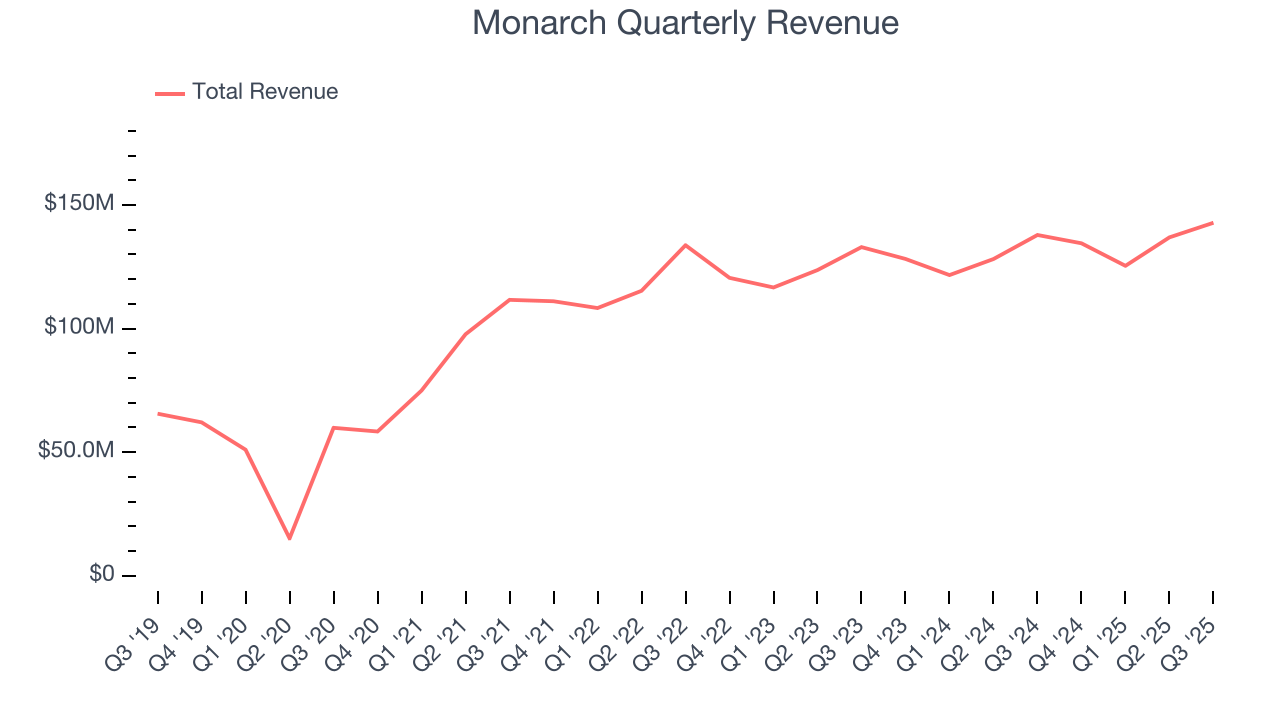
We at StockStory place the most emphasis on long-term growth, but within consumer discretionary, a stretched historical view may miss a company riding a successful new product or trend. Monarch’s recent performance shows its demand has slowed significantly as its annualized revenue growth of 4.5% over the last two years was well below its five-year trend. Note that COVID hurt Monarch’s business in 2020 and part of 2021, and it bounced back in a big way thereafter. 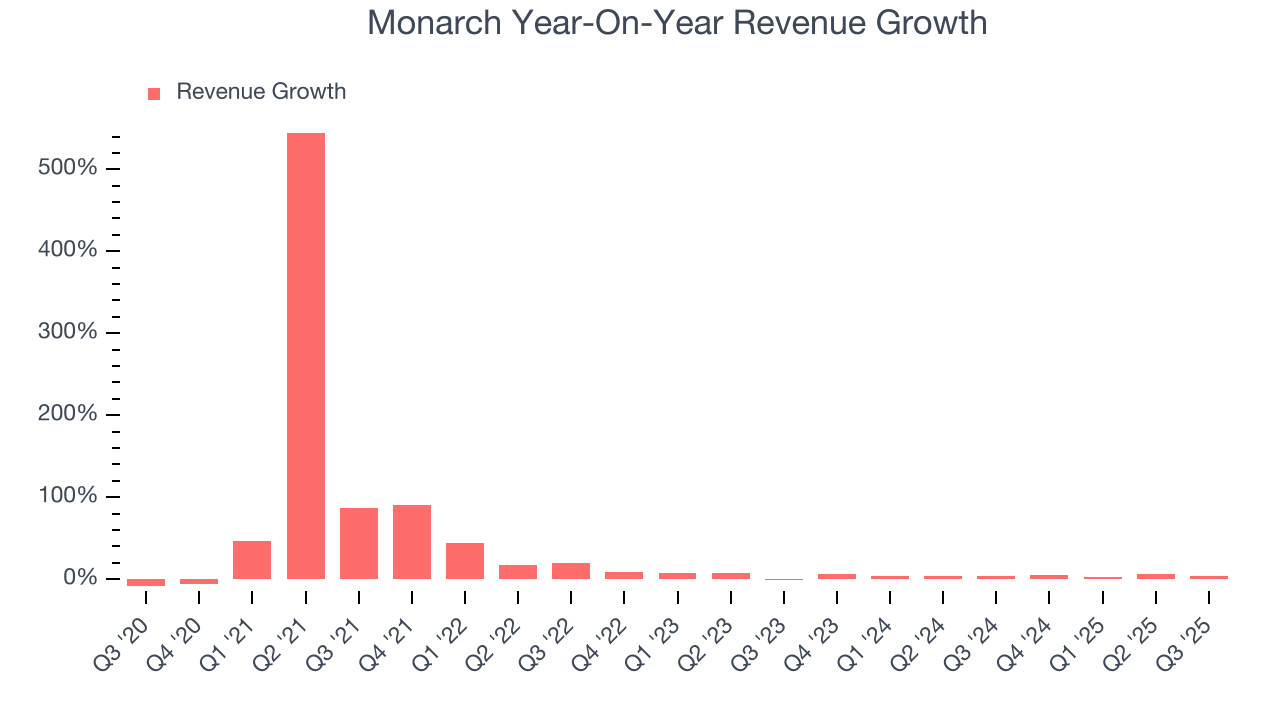
We can dig further into the company’s revenue dynamics by analyzing its three most important segments: Casino, Dining, and Hotel, which are 56.1%, 23.7%, and 15.8% of revenue. Over the last two years, Monarch’s revenues in all three segments increased. Its Casino revenue (Poker, Blackjack) averaged year-on-year growth of 5.8% while its Dining (food and beverage) and Hotel (overnight stays) revenues averaged 1.4% and 3.8%. 
This quarter, Monarch’s revenue grew by 3.6% year on year to $142.8 million, falling short of Wall Street’s estimates.
Looking ahead, sell-side analysts expect revenue to grow 4.5% over the next 12 months, similar to its two-year rate. This projection doesn't excite us and suggests its newer products and services will not catalyze better top-line performance yet. At least the company is tracking well in other measures of financial health.
6. Operating Margin
Monarch’s operating margin has shrunk over the last 12 months, but it still averaged 20.5% over the last two years, top-notch for a consumer discretionary business. This shows it’s an efficient company that manages its expenses effectively, and its top-notch historical revenue growth also suggests its margin dropped because it ramped up investments to capture market share, a strategy that seems to have paid off so far.
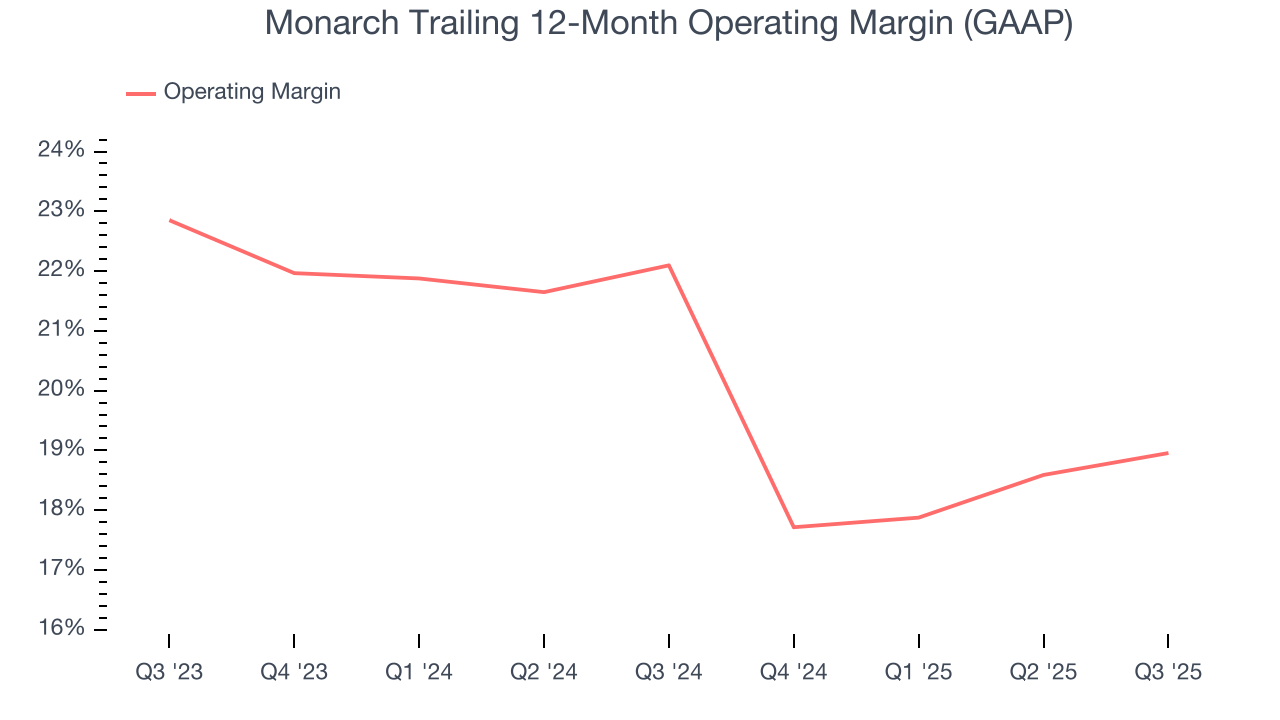
This quarter, Monarch generated an operating margin profit margin of 26.7%, up 1.1 percentage points year on year. This increase was a welcome development and shows it was more efficient.
7. Earnings Per Share
We track the long-term change in earnings per share (EPS) for the same reason as long-term revenue growth. Compared to revenue, however, EPS highlights whether a company’s growth is profitable.
Monarch’s EPS grew at an astounding 41.7% compounded annual growth rate over the last five years, higher than its 23.5% annualized revenue growth. This tells us the company became more profitable on a per-share basis as it expanded.
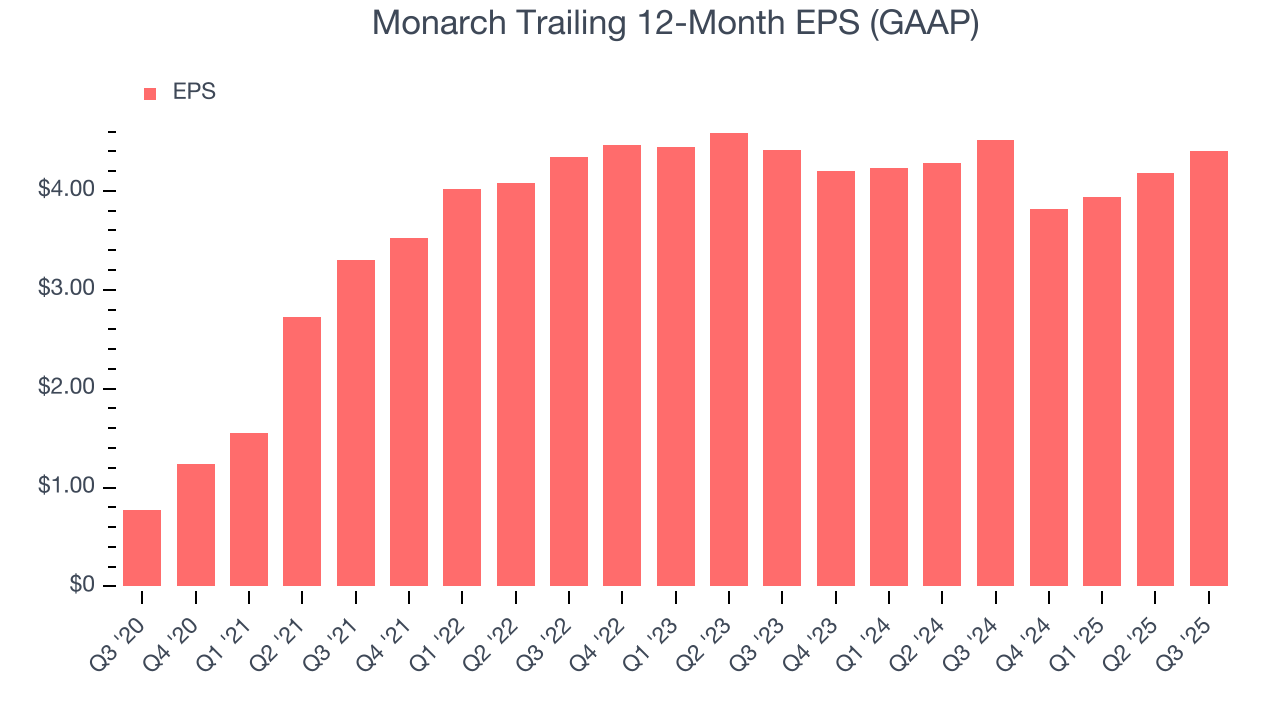
In Q3, Monarch reported EPS of $1.69, up from $1.47 in the same quarter last year. This print beat analysts’ estimates by 7.4%. Over the next 12 months, Wall Street expects Monarch’s full-year EPS of $4.40 to grow 27.3%.
8. Cash Is King
Free cash flow isn't a prominently featured metric in company financials and earnings releases, but we think it's telling because it accounts for all operating and capital expenses, making it tough to manipulate. Cash is king.
Monarch has shown robust cash profitability, giving it an edge over its competitors and the ability to reinvest or return capital to investors. The company’s free cash flow margin averaged 21.5% over the last two years, quite impressive for a consumer discretionary business.
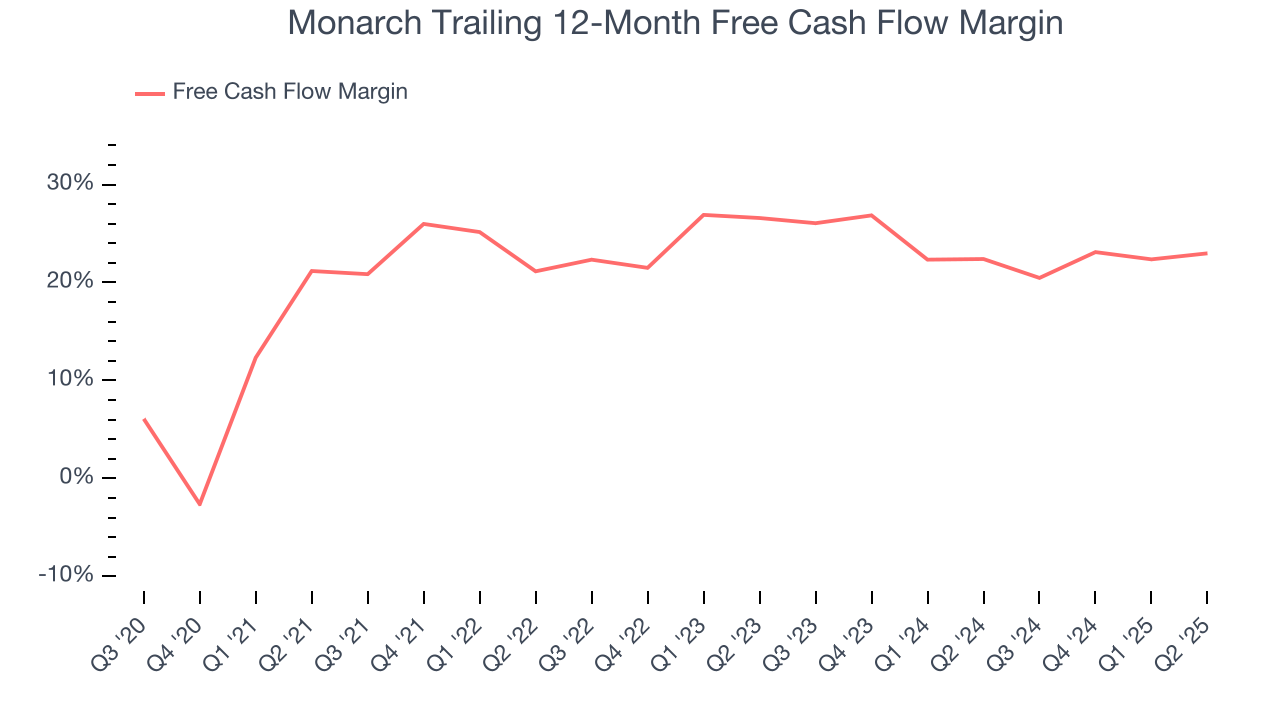
9. Return on Invested Capital (ROIC)
EPS and free cash flow tell us whether a company was profitable while growing its revenue. But was it capital-efficient? A company’s ROIC explains this by showing how much operating profit it makes compared to the money it has raised (debt and equity).
Monarch’s five-year average ROIC was 17.1%, higher than most consumer discretionary businesses. This illustrates its management team’s ability to invest in profitable growth opportunities and generate value for shareholders.
We like to invest in businesses with high returns, but the trend in a company’s ROIC is what often surprises the market and moves the stock price. Over the last few years, Monarch’s ROIC averaged 3.8 percentage point increases each year. This is a great sign when paired with its already strong returns. It could suggest its competitive advantage or profitable growth opportunities are expanding.
10. Balance Sheet Assessment
Companies with more cash than debt have lower bankruptcy risk.
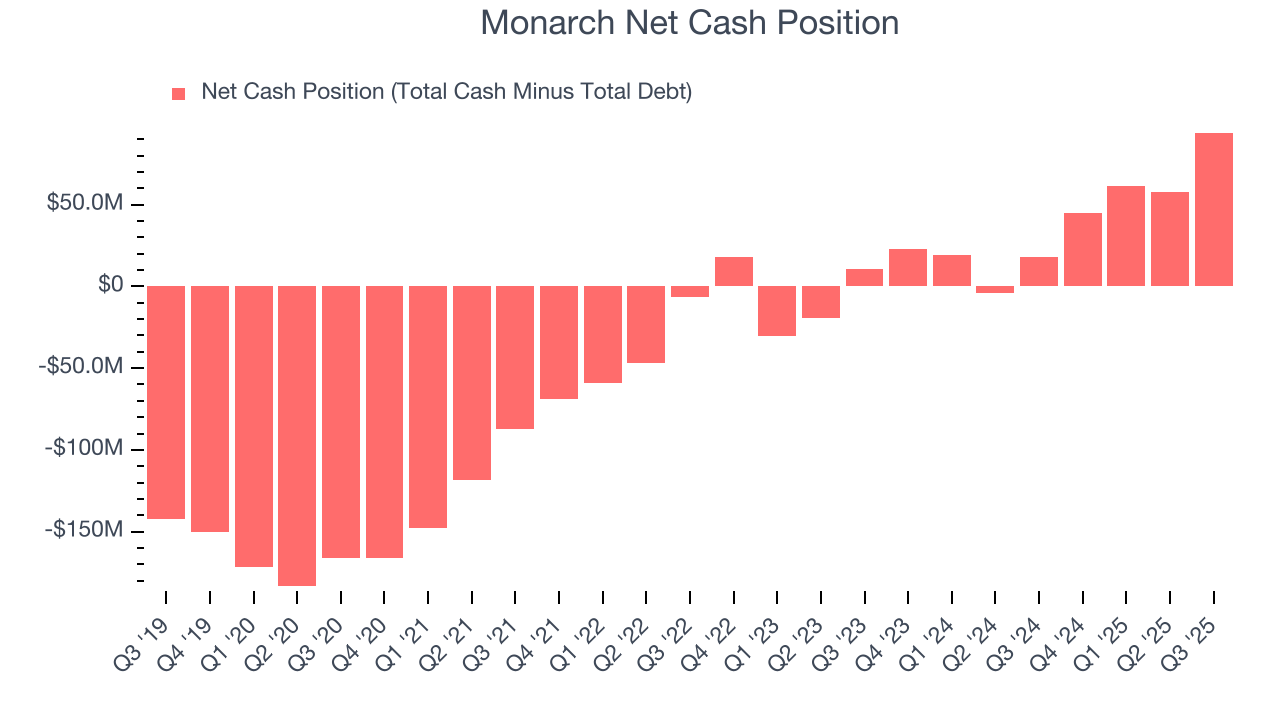
Monarch is a profitable, well-capitalized company with $107.6 million of cash and $13.56 million of debt on its balance sheet. This $94.08 million net cash position is 5.5% of its market cap and gives it the freedom to borrow money, return capital to shareholders, or invest in growth initiatives. Leverage is not an issue here.
11. Key Takeaways from Monarch’s Q3 Results
It was good to see Monarch beat analysts’ EPS expectations this quarter. On the other hand, its revenue missed. Overall, this was a mixed quarter. The stock remained flat at $98 immediately following the results.
12. Is Now The Time To Buy Monarch?
Updated: December 4, 2025 at 9:57 PM EST
Are you wondering whether to buy Monarch or pass? We urge investors to not only consider the latest earnings results but also longer-term business quality and valuation as well.
Monarch doesn’t pass our quality test. For starters, its revenue growth was weak over the last five years, and analysts expect its demand to deteriorate over the next 12 months. And while its solid EPS growth over the last five years shows its profits are trickling down to shareholders, the downside is its Forecasted free cash flow margin suggests the company will have more capital to invest or return to shareholders next year. On top of that, its projected EPS for the next year is lacking.
Monarch’s P/E ratio based on the next 12 months is 16.8x. This valuation is reasonable, but the company’s shaky fundamentals present too much downside risk. There are superior stocks to buy right now.
Wall Street analysts have a consensus one-year price target of $107.17 on the company (compared to the current share price of $96.32).



